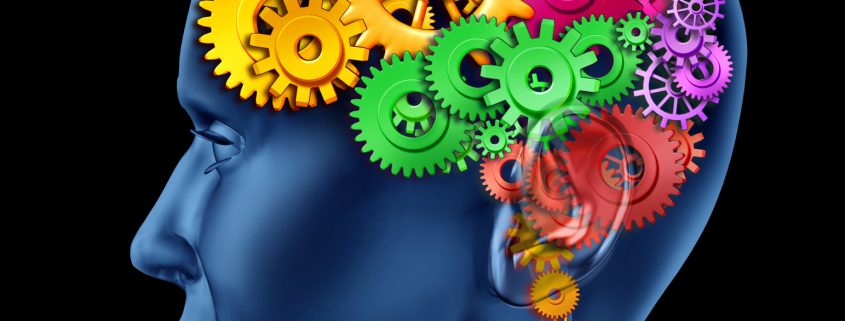The Triune Brain
The Triune brain.
The foundation.
A basic understanding of the structure of the human brain is absolutely necessary if one truly wishes to understand both the basic dynamics of consciousness and the very societal stigmas and human corruption we found ourselves in today.
The brain is generally recognized as the seat of consciousness in the body.
However, “consciousness” — which is just EXPRESSION in physical form — has a threefold nature. They are as follows: thoughts, emotions, and actions.
The majority of our decision making is based off of impulse. Not animalistic instinct. Which is a direct contrast to other like mammalian species.
Humans make decisions based off feelings such as pleasure: i.e., in the food they choose to eat, in the way that they dress, or down to the very driven behaviors of sex.
There are 3 total layers to the “triune brain”( Reptillian, Limbic, Neocortex)
Let’s start with the first layer which is, the ‘brain stem’ aka the reptilian brain. This complex lies at the “base”, or “lowest” part of the brain
The name is given due to the fact that the behavioral traits for which it conveys are most often observed in and associated with reptiles.
As the oldest and least advanced part of the brain, the Reptilian brain is responsible for the animalistic, instinctual, base behavior which many human beings exhibit and experience.
Here are some of the traits someone might experience with or during moments pure instinct:
direct stimulus-response
fight-or-flight response
competition
aggression
domination
repetition
ritual
the desire to hoard resources
Think of these traits as the “base” functions of consciousness. They are less-than-human, essentially animalistic thoughts and behaviors, which in turn, put together the “lowest” states of awareness and being.
Try to view the triune brain in “layers” as we dive into each. The Reptilian brain, simply put, is just the deepest “layer”. Exactly why it’s one of the parts of the foundation that creates our lenses in the first place.
Now, on to the second layer which is the limbic system. It is made up of three separate parts itself. So get ready!
First the hippocampus, it plays an important role in the consolidation of information from short-term memory to long-term memory, and in spatial memory that enables navigation.
Second the hypothalamus has one of the most important functions alone!
It links the nervous system to the Endocrine System (hormones) via the pituitary gland (hypophysis). It controls body temperature, thirst, hunger, and other homeostatic systems, and is involved in sleep and emotional activity.
Lastly, the amygdala performs a primary role in the processing of memory, decision-making and emotional response. Specifically in human brains the amygdala’s ultimate primary duty is in the formation and storage of memories associated with emotional events. So the information regarding the event is slowly assimilated into long-term (potentially lifelong) storage over time.
Studies show that damage to the amygdala can interfere with memory that is strengthened by emotion. One study examined a patient with bilateral degeneration of the amygdala. He was told a violent story accompanied by matching pictures and was observed based on how much he could recall from the story. The patient had less recollection of the story than patients with a functional amygdala, succeeding in showing that the amygdala has a strong connection with emotional learning.
All three combined and operating the limbic system together make up the second layer.
Lastly, the most significant layer of the “Triune Brain”, the third, is known as the Neocortex. This is where all of the electrical and chemical interactions that make our higher-order thinking and expression possible. It serves as “command-and-control” center. Better yet, The “CEO” of the brain complex.
Responsibilities are to regulate the activities taking place in both the R-Complex and Limbic System. It is also divided into two halves which form the left and right brain hemispheres.
The left brain hemisphere is responsible for our capability to engage in analytical thought, verbal and written communication, logic, reason, mathematics, and science.
The right brain hemisphere makes different types of activities and traits possible, such as intuition, empathy, creative expression, art, music, and holistic thought.
If, by whatever means, a person’s Neocortex may become significantly or severely imbalanced toward one brain hemisphere or the other, the Neocortex, as a whole complex, will cease to function.
Upon having reached this state of brain dysfunction, the Neocortex will stop regulating the processes that take place in both the R-Complex and the Limbic System. Therefore the executive control functions of the brain will then be turned over to either the R-Complex or the Limbic System, depending on the nature of the original imbalance.
These dysfunctions are critically contributing to our behavior and actions/thoughts that become ingrained into our lives. This is exactly why we need to focus on mental health and that it is such an important role and shows up absolutely everywhere. We need to smash the lens that it ISN’T a huge factor in everyone’s life, everywhere like cobwebs that keep coming back.
Stop ignoring the signs, the constant red flags, stop allowing yourself to be so unaware. Stop treating symptoms on superficial value.
Stop being afraid and start to dive deeper. Find the root of the problem. Fix that instead. That’s where you’ll get the most done.



